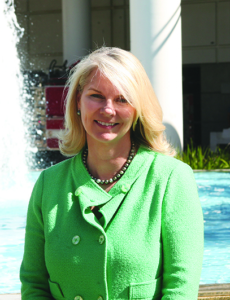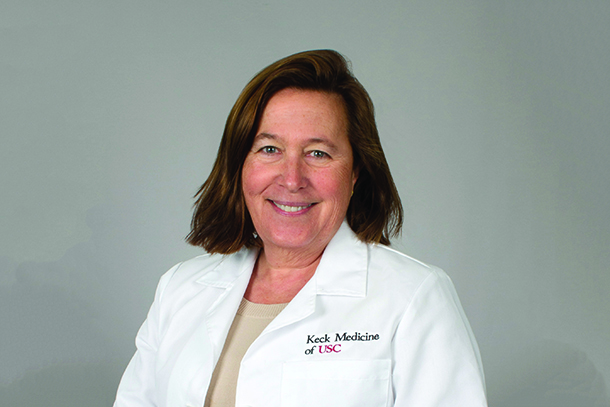From how we consume entertainment and pay our bills to how we navigate roads and purchase goods, digital technology has transformed our daily lives. Now, Keck School of Medicine of USC experts are harnessing digital technology to re-envision health care delivery and consumption. Carol J. Peden, MD, MPH, professor of clinical anesthesiology and director, Center for Health Systems Innovation, and Leslie A. Saxon, MD, professor of medicine (clinical scholar) and executive director, USC Center for Body Computing, are among the leaders who aim to revolutionize health care.

Carol Peden (Photo/Douglas Morino)
They published some of their ideas in an article in the June 15 issue of NEJM Catalyst, and spoke with HSC News about their work and what they envision for the future of health care.
How is digital technology changing health care delivery?
Leslie Saxon: The next generation of medical care and delivery is going to be all about software and services. Digital technology can provide access to health care and high quality health care information. It also allows you to smartly leverage experts across larger populations of patients. Physicians spend up to 50 percent of our time on custodial compliance related tasks. Digital technology can free us up to focus on the patients who actually need our expertise.
What are some of the challenges posed by digital technology?
Carol Peden: The people who are designing innovation are not the people who are the biggest users of health care. We have to think about designing for and engaging the most socially disadvantaged and elderly patients. I’ve seen lots of companies with good ideas, but there are challenges to integrating them into your system and testing them. We want to make sure that they will really add value, not just be a new shiny toy.
What are some specific examples of how digital technology can be harnessed?
LS: We’ve have really good sensors in smartphones, worn on the body and implantable. I implant cardiac rhythm management devices attached to remote Internet connections that are capable of unbelievable diagnostics. I can follow a thousand patients with implanted devices every day. I can look at a secure website and intervene before things happen. That saves lives and improves outcomes.
CP: That same idea can be used to help patients with chronic health issues. They don’t always have to travel to the hospital. They can check in more frequently electronically and their providers can receive more feedback. For at-risk patients, we’re looking at how we can enable them to stay in their own environments longer and how we can get feedback on their physiological state, which previously might have required the presence of a nurse or a doctor to take their vital signs.
LS: When we send patients home, maybe they’ve got a sensor embedded in their pill so we know when they take it. We get their blood pressure right after they take the pill. So we can see, for example, if their blood pressure falls, we know to lower the dose.
Talk about the Virtual Care Clinic.
LS: We’re trying to create a new model of true patient engagement. The virtual care clinic is a construct where we build out the infrastructure in order to support on-demand care completely outside the walls of a medical center. This is how we think 80 percent of health care will be delivered in the future. We’re developing the infrastructure for every component — from user interface to cyber security to compliance.
We’re also working on virtual human agents (physician avatars) that, using voice recognition, artificial intelligence and the ability to detect people’s emotions, will be able to provide care anywhere, any time.
CP: Our approach isn’t just about tech and new things. It’s about how we think differently about delivering health care, and how we make life easier or more convenient for our patients.
— Nancy Sokoler Steiner


